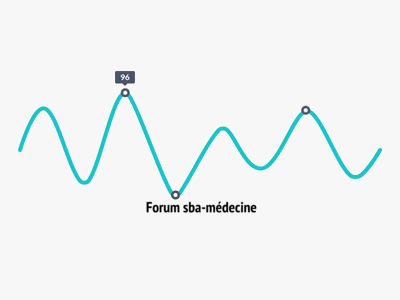Rappel du premier message :
Stroke 7th Edition Pathophysiology, Diagnosis, and Management pdf free
Section 1 Pathophysiology
Introduction
1. Cerebral Vascular Biology in Health and Disease
2. Mechanisms of Thrombosis and Thrombolysis
3. Cerebral Blood Flow and Metabolism: Regulation and Pathophysiology in Cerebrovascular Disease
4. Histopathology of Brain Tissue Response to Stroke and Injury
5. Molecular and Cellular Mechanisms of Ischemia-Induced Neuronal Death
6. Intracellular Signaling: Mediators and Protective Responses
7. The Neurovascular Unit and Responses to Ischemia
8. Mechanisms of Damage After Cerebral Hemorrhage
9. White Matter Pathophysiology
10. Cerebral Ischemia and Inflammation
11. Mechanisms of Plasticity, Remodeling and Recovery
12. Genetics and Vascular Biology of Brain Vascular Malformations
13. Gliovascular Mechanisms and White Matter Injury in Vascular Cognitive Impairment and Dementia
Section 2 Epidemiology and Risk Factors
Introduction
14. Global Burden of Stroke
15. Stroke Disparities
16. Risk Factors and Prevention
17. Prognosis after Stroke
18. Vascular Dementia and Cognitive Impairment
19. Genetic Basis of Stroke Occurrence, Prevention and Outcome
Section 3 Clinical Manifestations
Introduction
20. Classification of Ischemic Stroke
21. Clinical Scales to Assess Patients with Stroke
22. Carotid Artery Disease
23. Anterior Cerebral Artery Disease
24. Middle Cerebral Artery Disease
25. Posterior Cerebral Artery Disease
26. Vertebrobasilar Disease
27. Lacunar Syndromes, Lacunar Infarcts, and Cerebral Small-Vessel Disease
28. Intracerebral Hemorrhage
29. Aneurysmal Subarachnoid Hemorrhage
30. Arteriovenous Malformations and Other Vascular Anomalies
31. Stroke and Other Vascular Syndromes of the Spinal Cord
Section 4 Specific Conditions and Stroke
Introduction
32. Cardiac Diseases
33. Atherosclerotic Disease of the Proximal Aorta
34. Stroke Related to Surgery and Other Procedures
35. Arterial Dissection, Fibromuscular Dysplasia, and Carotid Web
36. Inflammatory and Infectious Vasculopathies
37. Reversible Cerebral Vasoconstriction Syndromes
38. Posterior Reversible Encephalopathy Syndrome
39. Stroke and Substance Abuse
40. Moyamoya Disease
41. Cerebral Autosomal Dominant Arteriopathy with Subcortical Infarcts and Leukoencephalopathy
42. Hematologic Disorders and Stroke
43. Migraine and Stroke
44. Cryptogenic Stroke
45. Cerebral Venous Thrombosis
Section 5 Diagnostic Studies
Introduction
46. Ultrasonography
47. Computed Tomography-Based Evaluation of Cerebrovascular Disease
48. Magnetic Resonance Imaging of Cerebrovascular Diseases
49. Cerebral Angiography
50. OMICs in Stroke: Insight into stroke through epigenomics, transcriptomics, proteomics, lipidomics, and metabolomics
Section 6 Therapy
Part A: Medical Therapy
Introduction
51. Stroke Systems of Care and Impact on Acute Stroke Treatment
52. Prehospital and Emergency Department Care of the Patient with Acute Stroke
53. Intravenous Thrombolysis
54. Antithrombotic Therapy for Treatment of Acute Ischemic Stroke
55. General Stroke Management and Stroke Units
56. Critical Care of the Patient with Acute Stroke,
57. Pharmacologic Modification of Acute Cerebral Ischemia
58. Treatment of "Other" Stroke Etiologies
59. Medical Therapy of Intracerebral and Intraventricular Hemorrhage
60. Rehabilitation and Recovery of the Patient with Stroke
61. Interventions to Improve Recovery after Stroke
62. Enhancing Stroke Recovery with Cellular Therapies
63. Antiplatelet Therapy for Secondary Prevention of Stroke
64. Secondary Prevention of Cardioembolic Stroke
65. Design of Stroke-Related Clinical Trials
Part B: Interventional Therapy
Introduction
66. Endovascular Therapy of Extracranial and Intracranial Occlusive Disease
67. Endovascular Treatment of Acute Ischemic Stroke
68. Endovascular Treatment of Intracranial Aneurysms
69. Interventional Therapy of Brain and Spinal Arteriovenous Malformations
70. Dural Arteriovenous Malformations
Part C: Surgical Therapy
Introduction
71. Surgery of Anterior and Posterior Aneurysms
72. Surgery for Intracerebral Hemorrhage
73. Management of Intraventricular Hemorrhage
74. Surgical Management of Cranial and Spinal Arteriovenous Malformations
75. Surgical Management of Cavernous Malformations and Venous Anomalies
76. Indications for Carotid Endarterectomy in Patients with Asymptomatic and Symptomatic Carotid Stenosis
77. Extracranial to Intracranial Bypass for Cerebral Ischemia
78. Decompressive Craniectomy for Infarction and Hemorrhage

 Contribuer à enrichir le contenu du forum grâce à vous, des milliers d'étudiants peuvent bénéficier si vous partagez avec eux les références qui vous ont aidé dans votre réussite, qu'il s'agisse de Livres Médicaux, de cours ou de vos examens.
Contribuer à enrichir le contenu du forum grâce à vous, des milliers d'étudiants peuvent bénéficier si vous partagez avec eux les références qui vous ont aidé dans votre réussite, qu'il s'agisse de Livres Médicaux, de cours ou de vos examens.
Stroke 7th Edition Pathophysiology, Diagnosis, and Management pdf free
Editors: James Grotta Gregory Albers Joseph Broderick Scott Kasner Eng Lo Ralph Sacco Lawrence Wong Arthur Day Hardcover Imprint: Elsevier Published Date: 6th February 2021 Page Count: 1176
Authored by the world’s foremost stroke experts, this classic text brings you fully up to date with current research findings and management approaches for cerebrovascular disease. Stroke: Pathophysiology, Diagnosis, and Management, 7th Edition, covers every aspect of this fast-moving field, and is an ideal resource for stroke specialists, general neurologists, and other medical professionals with an interest in stroke. You’ll find expert clinical guidance, comprehensive pathophysiology coverage, data from recent trials, advances in diagnostic tests, full-color CT images, pathology slides, and much more, for a complete picture of today’s stroke medicine.Table of Contents :
Section 1 Pathophysiology
Introduction
1. Cerebral Vascular Biology in Health and Disease
2. Mechanisms of Thrombosis and Thrombolysis
3. Cerebral Blood Flow and Metabolism: Regulation and Pathophysiology in Cerebrovascular Disease
4. Histopathology of Brain Tissue Response to Stroke and Injury
5. Molecular and Cellular Mechanisms of Ischemia-Induced Neuronal Death
6. Intracellular Signaling: Mediators and Protective Responses
7. The Neurovascular Unit and Responses to Ischemia
8. Mechanisms of Damage After Cerebral Hemorrhage
9. White Matter Pathophysiology
10. Cerebral Ischemia and Inflammation
11. Mechanisms of Plasticity, Remodeling and Recovery
12. Genetics and Vascular Biology of Brain Vascular Malformations
13. Gliovascular Mechanisms and White Matter Injury in Vascular Cognitive Impairment and Dementia
Section 2 Epidemiology and Risk Factors
Introduction
14. Global Burden of Stroke
15. Stroke Disparities
16. Risk Factors and Prevention
17. Prognosis after Stroke
18. Vascular Dementia and Cognitive Impairment
19. Genetic Basis of Stroke Occurrence, Prevention and Outcome
Section 3 Clinical Manifestations
Introduction
20. Classification of Ischemic Stroke
21. Clinical Scales to Assess Patients with Stroke
22. Carotid Artery Disease
23. Anterior Cerebral Artery Disease
24. Middle Cerebral Artery Disease
25. Posterior Cerebral Artery Disease
26. Vertebrobasilar Disease
27. Lacunar Syndromes, Lacunar Infarcts, and Cerebral Small-Vessel Disease
28. Intracerebral Hemorrhage
29. Aneurysmal Subarachnoid Hemorrhage
30. Arteriovenous Malformations and Other Vascular Anomalies
31. Stroke and Other Vascular Syndromes of the Spinal Cord
Section 4 Specific Conditions and Stroke
Introduction
32. Cardiac Diseases
33. Atherosclerotic Disease of the Proximal Aorta
34. Stroke Related to Surgery and Other Procedures
35. Arterial Dissection, Fibromuscular Dysplasia, and Carotid Web
36. Inflammatory and Infectious Vasculopathies
37. Reversible Cerebral Vasoconstriction Syndromes
38. Posterior Reversible Encephalopathy Syndrome
39. Stroke and Substance Abuse
40. Moyamoya Disease
41. Cerebral Autosomal Dominant Arteriopathy with Subcortical Infarcts and Leukoencephalopathy
42. Hematologic Disorders and Stroke
43. Migraine and Stroke
44. Cryptogenic Stroke
45. Cerebral Venous Thrombosis
Section 5 Diagnostic Studies
Introduction
46. Ultrasonography
47. Computed Tomography-Based Evaluation of Cerebrovascular Disease
48. Magnetic Resonance Imaging of Cerebrovascular Diseases
49. Cerebral Angiography
50. OMICs in Stroke: Insight into stroke through epigenomics, transcriptomics, proteomics, lipidomics, and metabolomics
Section 6 Therapy
Part A: Medical Therapy
Introduction
51. Stroke Systems of Care and Impact on Acute Stroke Treatment
52. Prehospital and Emergency Department Care of the Patient with Acute Stroke
53. Intravenous Thrombolysis
54. Antithrombotic Therapy for Treatment of Acute Ischemic Stroke
55. General Stroke Management and Stroke Units
56. Critical Care of the Patient with Acute Stroke,
57. Pharmacologic Modification of Acute Cerebral Ischemia
58. Treatment of "Other" Stroke Etiologies
59. Medical Therapy of Intracerebral and Intraventricular Hemorrhage
60. Rehabilitation and Recovery of the Patient with Stroke
61. Interventions to Improve Recovery after Stroke
62. Enhancing Stroke Recovery with Cellular Therapies
63. Antiplatelet Therapy for Secondary Prevention of Stroke
64. Secondary Prevention of Cardioembolic Stroke
65. Design of Stroke-Related Clinical Trials
Part B: Interventional Therapy
Introduction
66. Endovascular Therapy of Extracranial and Intracranial Occlusive Disease
67. Endovascular Treatment of Acute Ischemic Stroke
68. Endovascular Treatment of Intracranial Aneurysms
69. Interventional Therapy of Brain and Spinal Arteriovenous Malformations
70. Dural Arteriovenous Malformations
Part C: Surgical Therapy
Introduction
71. Surgery of Anterior and Posterior Aneurysms
72. Surgery for Intracerebral Hemorrhage
73. Management of Intraventricular Hemorrhage
74. Surgical Management of Cranial and Spinal Arteriovenous Malformations
75. Surgical Management of Cavernous Malformations and Venous Anomalies
76. Indications for Carotid Endarterectomy in Patients with Asymptomatic and Symptomatic Carotid Stenosis
77. Extracranial to Intracranial Bypass for Cerebral Ischemia
78. Decompressive Craniectomy for Infarction and Hemorrhage
tags: [Vous devez être inscrit et connecté pour voir ce lien] [Vous devez être inscrit et connecté pour voir ce lien]
link 01 (main link): sba-medecinedrive.com
link 02 (secondary link): 1fichier.com
or scan the QR code: 

important:Malheureusement, notre page Facebook a été fermée  . Abonnez-vous à notre nouvelle page.
. Abonnez-vous à notre nouvelle page.
 . Abonnez-vous à notre nouvelle page.
. Abonnez-vous à notre nouvelle page. Contribuer à enrichir le contenu du forum
Contribuer à enrichir le contenu du forumNe soyez pas égoïste,Vous pouvez nous envoyer les fichiers via le lien ci-dessous en un seul clic:




 laisser un commentaire rapide:
laisser un commentaire rapide: